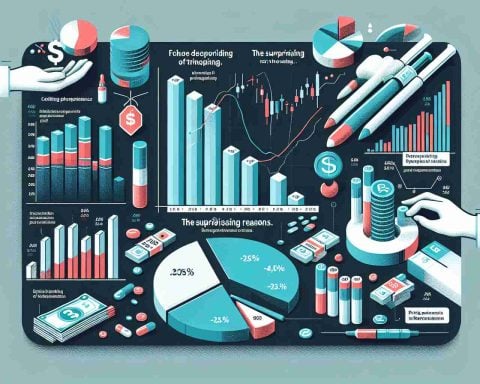- North America is set for a major transformation with 34 EV battery projects in progress, up from just 2 in 2019.
- The Inflation Reduction Act (IRA) is a significant driver of this growth, attracting billions in new investments despite political challenges.
- Automakers must produce North American batteries before 2030 to meet the target of 50% electric or hybrid vehicle sales.
- The IRA incentivizes consumers with tax credits up to $7,500, supporting the shift to electric vehicles.
- Leading companies like BMW are investing heavily to satisfy the increasing demand for EV batteries.
- Peak production from these factories could support up to 18 million electric vehicles, emphasizing the critical need for domestic battery manufacturing.
Get ready for a revolution in the automotive world! North America is experiencing an explosive growth spurt in electric vehicle (EV) battery manufacturing, shifting from a mere two factories in 2019 to a staggering 34 projects planned or underway today.
This colossal leap is largely fueled by the Inflation Reduction Act (IRA), which ignited a surge of investment aimed at reshaping the U.S. battery supply chain. Even with recent political hurdles, the momentum has not faltered. Despite calls to freeze IRA funding, billions in private investments continue to flow, reinforcing the need for domestic battery production to avoid dependency on foreign sources, particularly China.
The race is on! Automakers and battery producers are racing against the clock, committing to produce North American-made batteries before 2030. With a goal set to have 50% of all new vehicle sales in the U.S. be electric or hybrid by that same year, the stakes are higher than ever. The IRA offers tempting incentives—like up to $7,500 in tax credits for consumers and substantial manufacturing credits—keeping the electric dreams alive.
Leading the charge, companies like BMW are making headlines with multi-billion-dollar investments, gearing up to meet soaring demand. Experts predict that when these factories hit peak production, they could yield enough batteries to power 18 million EVs!
As North America surges toward an electrifying future, the takeaway is clear: a shift towards homegrown manufacturing is not just a trend, it’s a necessity. Stay tuned, as the landscape of automotive energy is rapidly transforming!
The EV Battery Boom: What You Need to Know!
The Electric Vehicle Battery Manufacturing Revolution
The automotive industry is undergoing a transformative phase in North America, primarily due to the soaring demand for electric vehicles (EVs) and the corresponding rise in domestic battery manufacturing. With an impressive jump from just two battery factories in 2019 to 34 projected factories today, the urgency to establish a localized supply chain has never been higher.
The pivotal Inflation Reduction Act (IRA) remains at the forefront, driving substantial investment into the sector. Despite political challenges and calls to pause IRA funding, the influx of billions in private investments illustrates the unwavering commitment to developing a self-sufficient battery production ecosystem, crucial for reducing reliance on foreign supply chains, particularly from China.
Key Factors Influencing Growth
– Investor Confidence: The IRA has catalyzed private sector investments, boosting the confidence of automotive companies and battery manufacturers alike.
– Production Goals: The ambitious target to have 50% of all new vehicle sales in the U.S. being electric or hybrid by 2030 has led to significant commitments from various industry players.
– Market Demand: An increase in EV sales is projected, necessitating the production of vast quantities of batteries — experts estimate that these new facilities could eventually support up to 18 million EVs.
Innovations and Trends
As the industry progresses, several innovations are set to shape the future of EV battery manufacturing:
– Solid-State Batteries: Companies are exploring solid-state technology, promising greater energy density and safety compared to traditional lithium-ion batteries.
– Recycling Programs: Emphasis on sustainable practices is leading to the development of recycling programs aimed at reusing battery materials, reducing environmental impact.
Use Cases, Specifications, and Limitations
– Use Cases: With the EV market expanding, batteries are not only essential for passenger vehicles but also for commercial applications, including public transport and freight.
– Specifications: The new battery plants will focus on advanced chemistries and configurations to meet the performance requirements of next-generation vehicles.
– Limitations: Challenges like sourcing raw materials sustainably and managing battery disposal remain critical hurdles that the industry must address as it scales operations.
Market Insights and Predictions
The outlook for the EV battery market is extremely positive, with forecasts indicating continued growth fueled by consumer preferences shifting toward sustainable transport options. Analysts predict that battery production capacity will see exponential growth over the next decade, supporting a broader transition to electric mobility.
Top Questions Answered
1. What impact will the Inflation Reduction Act have on the EV battery market?
– The IRA provides significant tax credits and incentives for both consumers and manufacturers, driving investment and production in North America, vital for achieving domestic battery supply as global demand soars.
2. How do new technologies like solid-state batteries change the market?
– Solid-state batteries offer improved safety and energy efficiency compared to traditional lithium-ion batteries, which could revolutionize performance and further enhance consumer adoption of EVs.
3. What are the environmental implications of EV battery production?
– While the shift to electric vehicles is beneficial for reducing carbon emissions, the production and disposal of batteries also pose environmental challenges that must be mitigated through recycling and sustainable sourcing practices.
For more information on the electric vehicle revolution, check out CNBC, where you can find the latest news and articles on the automotive industry and battery technologies.












